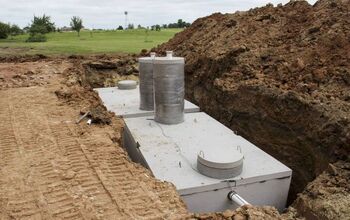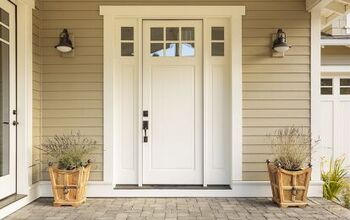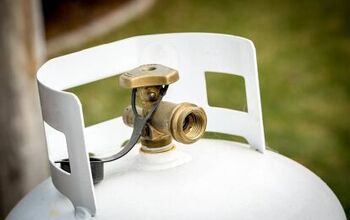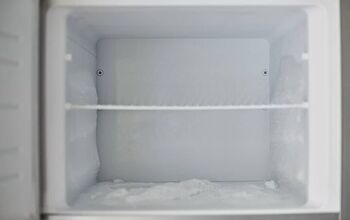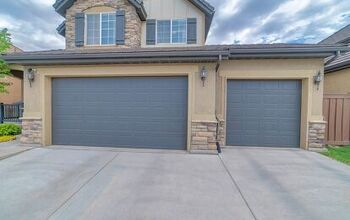How To Tell If Your Garden Soil Is Compacted

Taking care of a lawn is about much more than simply watering and mowing the grass. Truth is, lawns are prone to some annoying problems, such as soil compaction, which can take a big toll. That’s why everyone should know how to tell if the soil in their lawn is compacted.
If your lawn’s surface is hard, crusty, and full of thatch, there’s a good chance the soil is compacted. Soil compaction can also cause lots of standing water, discolored grass, and patches of dead grass. Compacted lawns also often have problems with weeds, pests, and fungal diseases, typically due to the standing water.
Keep up with yearly lawn aeration to prevent soil compaction. Follow along as we explore how to tell if your soil is compacted.
Eight Signs Of Soil Compaction
1. Hard Surface
A hard surface on your lawn is the easiest way to tell if the soil is compacted. Compacted soil binds together, which makes it feel hard and appear crusty. You can often tell this is the case just by looking at your lawn on a dry day.
However, you won’t have any doubts that your soil is compacted if you find it difficult to dig a hole or till the soil. It’s hard to work on compacted soil without using engine-powered tools, like a rototiller, or, in extreme cases, a backhoe. Homeowners who do a lot of yard work will quickly be able to tell if their lawn soil harder than usual.
That’s especially true when the soil dries out the day after a rainfalll. You shouldn’t have to put all your weight into digging a hole, unless the soil is compacted.
2. Stunted Grass Growth
Nobody wants to see patches of misshapen, discolored grass on their lawn. However, this is difficult to avoid if the earth is compacted, as it can significantly impact root growth. Instead of growing downward, the roots may grow horizontally in compacted soil.
This can cause the grass to grow in a misshapen pattern, which can affect its health. That can explain why you may find sections of yellow, patchy grass throughout your lawn. The roots may be exposed, and they typically appear hairy and weak when they grow horizontally. Because of this, the roots can quickly become dehydrated and weak. Unfortunately, this problem will persist for as long as your soil remains compacted.
3. Standing Water
You’re unlikely to find water standing on a healthy lawn, as it will easily drain through the soil. That said, water will pool on the surface of your lawn if the soil is compacted. Compacted soil features particles that are so close together that water can barely pass through the earth.
That’s why you will likely find several ugly puddles of dirty water spread throughout the lawn. However, finding puddles right after it rains doesn’t automatically mean your lawn has compacted soil. Water can pool on healthy lawns after hours or days of heavy rain.
However, you can tell something is wrong if certain areas dry out while puddles remain in other sections. Since you may only have compacted soil on parts of your lawn, you may find standing water in isolated areas.
4. Disappointing Fertilizer Results
When using fertilizer, you most likely expect to see a big difference in your lawn’s health. Unfortunately, you may not want to hold your breath for too long when fertilizing a lawn with compacted soil. That’s because fertilizer mostly works when the nutrients can easily reach the roots below the surface.
That’s not always possible when the soil is compacted, as fertilizer will struggle to penetrate it. Grass growing in compacted soil typically has underdeveloped roots, which has difficulty absorbing nutrients. However, the nutrients won’t likely reach the roots, as they will not penetrate the soil deep enough.
Some people try to overcompensate and continually treat their lawns with more nutrients. This can backfire, as adding too much potassium, nitrogen, or phosphorus can cause disproportionate growth.
5. Disease And Pests
Compacted soil can leave your lawn vulnerable to many fungal diseases and pest infestations. That’s especially true if you live in a humid and rainy climate, as your compacted lawn will stay damp for longer than it should. Because of that, your lawn is more likely to suffer from fungal diseases caused by excessive moisture.
The moisture can also attract many annoying pests, such as springtails, earwigs, grubs, fungus gnats, and slugs. Such pests can severely damage your lawn, and getting rid of them can be difficult. They can further damage your grass and plants that are damaged by the compacted soil.
While you can call a pest control service, they’ll only temporarily fix the problem. That’s because the excessive moisture and nutrient imbalances will persist until you address the soil compaction.
6. Soil Erosion
Soil erosion and soil compaction aren’t mutually exclusive, and you may be dealing with both issues. Many of the signs of soil erosion mimic the signs of soil compaction, and they go hand in hand. That said, soil compaction is at the root of soil erosion in many cases, whether you know it or not.
Because compacted soil won’t let water through easily, the topsoil can eventually wash away. This naturally erodes the soil and eliminates many of the key ingredients needed to maintain a healthy lawn. Until you address the soil compaction, your lawn will continually erode and lose vital nutrients.
7. Weed Growth
Weeds love to prey on unhealthy lawns, which makes compacted lawns the perfect target. Conversely, weeds often struggle to grow in healthy lawns, as grass roots leave little room for them. Grass struggles to grow in compacted soil, which leaves plenty of room for weeds to take over.
Dandelions, thistle, plantain, and crabgrass can easily grow in compacted soil, as oxygen deprivation doesn’t affect them too much. Some people mistakenly think that the weeds are to blame, but it’s really a problem with the soil. Addressing the soil compaction should also take care of your weed problems.
8. Unpleasant Thatch
Healthy lawns typically keep thatch at bay, and that’s why many people don’t see it build up too much. Thatch is a layer of organic matter that sits between the grass and the surface, and it can cause problems. On a healthy lawn, your soil should break the thatch down before it becomes too prominent and ugly.
Of course, this can’t easily happen if the soil is compacted, as it may lack key microbes and nutrients. This may be why you suddenly see many patches of unpleasant thatch throughout your lawn.
How To Prevent Soil Compaction
Preventing soil compaction is all about changing your lawn-care habits. You can protect your lawn from soil compaction if you take a few things into account, such as:
Aerate Your Lawn
Lawn aeration is the best way to fix compacted soil, and that’s where you should start. Aeration involves putting tiny holes in the lawn to improve drainage. This can help with soil compaction and erosion, and it’s worth doing every year if possible.
Aerating your lawn can also help your lawn get enough nutrients and oxygen. The effects won’t appear right away, but you will notice a difference not too long after.
Treat it With Compost
Compost is a miracle worker when it comes to fixing problems with soil, including compaction. That’s because balanced compost contains key nutrients that your lawn needs. By treating your lawn with compost, you can significantly improve the soil drainage.
When adding compost, you can also manually loosen the soil to ensure a perfect mixture. Otherwise, you’ll have a loose layer of compost and a tight layer of soil. However, some people put a layer of compost on top, then let the compost naturally degrade on top of the soil.
While this does work, it may not work quickly enough to help your severely compacted lawn. You’re better off digging at least 5” deep and mixing the compost with soil.
Protect Your Lawn From Vehicles And Foot Traffic
The more weight you put on your lawn, the more likely the soil will become compacted. This is especially true when the lawn is wet. Ideally, you should avoid leaving heavy equipment, like backhoes, on your lawn for too long.
When using heavy equipment, you should look for machinery with low-pressure tires. The key is to evenly distribute weight, so you don’t compact the soil. It’s also important to minimize foot traffic or at least dedicate certain areas for walking.
Similarly, you should try mixing up your lawnmowing habits, as mowing in the same direction can cause issues. Every few weeks, try mowing the lawn in another direction to prevent soil compaction.
Summing It Up
You can tell your soil is compacted if the surface is hard and weeds or thatch are present. Other signs, like standing water, patches of dead grass, and soil erosion, can indicate soil compaction. You can prevent soil compaction if you regularly aerate your lawn, treat it with compost, and minimize foot traffic.
Related Guides:

Nick Durante is a professional writer with a primary focus on home improvement. When he is not writing about home improvement or taking on projects around the house, he likes to read and create art. He is always looking towards the newest trends in home improvement.
More by Nick Durante
















